Application-Specific Integrated Circuits (ASICs) represent a class of microchips designed for a specific purpose or application. Unlike general-purpose integrated circuits like microprocessors, which can perform a wide variety of tasks, ASICs are tailored to meet the needs of a particular application.
This specialization allows for higher efficiency and performance in executing the tasks for which they were designed.
Application Specific Integrated Circuit Definition
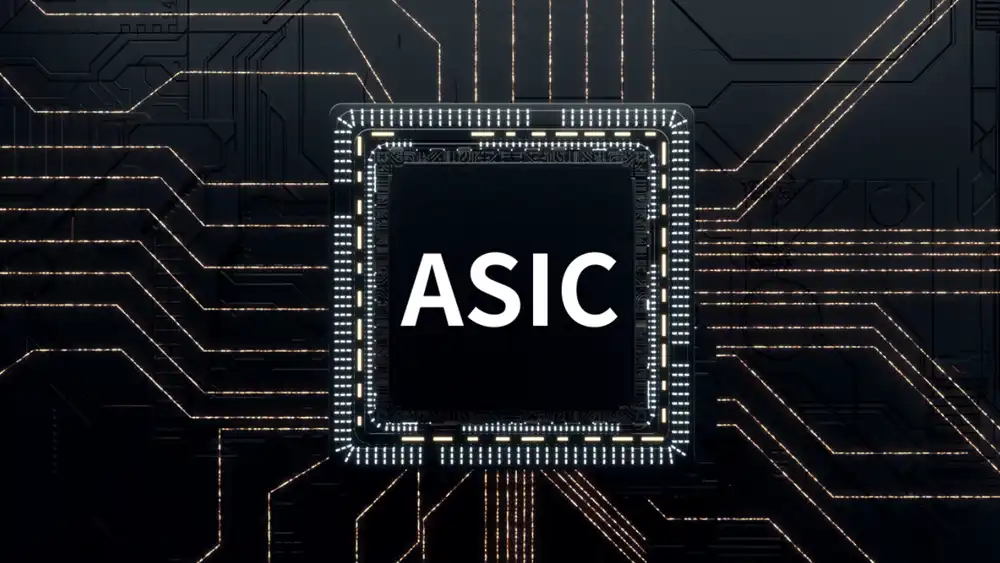
An Application-Specific Integrated Circuit (ASIC) is a type of microchip designed and optimized to perform a specific function or set of functions within an electronic system. Unlike general-purpose integrated circuits such as microprocessors, which can handle a wide variety of tasks, ASICs are tailored for a particular application, making them highly efficient and performant for those specific tasks.
The development of ASICs dates back to the 1980s when the demand for customized electronic solutions began to rise. As technology advanced, so did the complexity and capabilities of these circuits. Today, ASICs are integral to a wide range of technologies, from consumer electronics to industrial applications.
The relevance of ASICs in modern technology cannot be overstated. With the proliferation of smart devices, the Internet of Things (IoT), and advancements in fields like artificial intelligence (AI) and 5G technology, the need for optimized, high-performance, and energy-efficient solutions has become critical. ASICs play a pivotal role in meeting these demands.
Types of ASICs
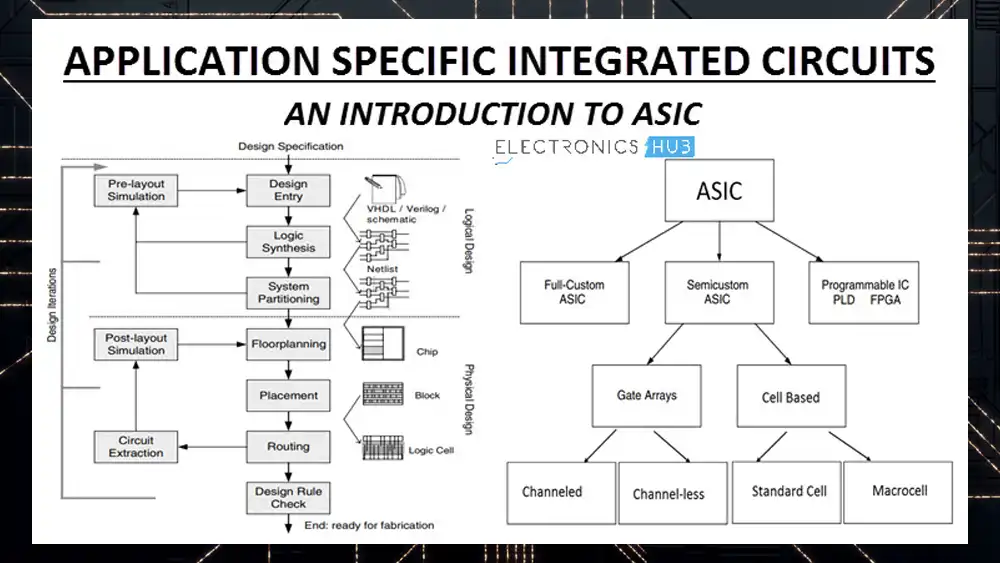
ASICs can be broadly categorized into three types: full-custom, semi-custom, and programmable ASICs. Each type has distinct characteristics, applications, and benefits.
Full-Custom ASICs
Full-custom ASICs are designed from the ground up for a specific application. This type of ASIC offers the highest level of customization, allowing designers to optimize every aspect of the circuit for performance, power consumption, and area. The design process for full-custom ASICs is complex and time-consuming, involving detailed layout and verification stages. These ASICs are typically used in high-volume applications where performance and efficiency are paramount, such as high-end processors and specialized computing devices.
Semi-Custom ASICs
Semi-custom ASICs provide a balance between customization and design complexity. They use pre-designed components, such as standard cells or gate arrays, which can be configured to meet the specific needs of an application. This approach reduces design time and cost compared to full-custom ASICs while still offering a degree of customization. Semi-custom ASICs are commonly used in consumer electronics, telecommunications, and automotive applications, where flexibility and cost-efficiency are essential.
Programmable ASICs
Programmable ASICs, often referred to as field-programmable gate arrays (FPGAs), combine the benefits of customizability with the flexibility of reprogrammability. Unlike traditional ASICs, which are fixed after manufacturing, FPGAs can be reprogrammed to alter their functionality. This makes them ideal for applications that require frequent updates or prototyping. While they do not offer the same level of optimization as full-custom or semi-custom ASICs, their versatility makes them popular in research and development, aerospace, and defense industries.
Application Specific Integrated Circuit in Embedded System
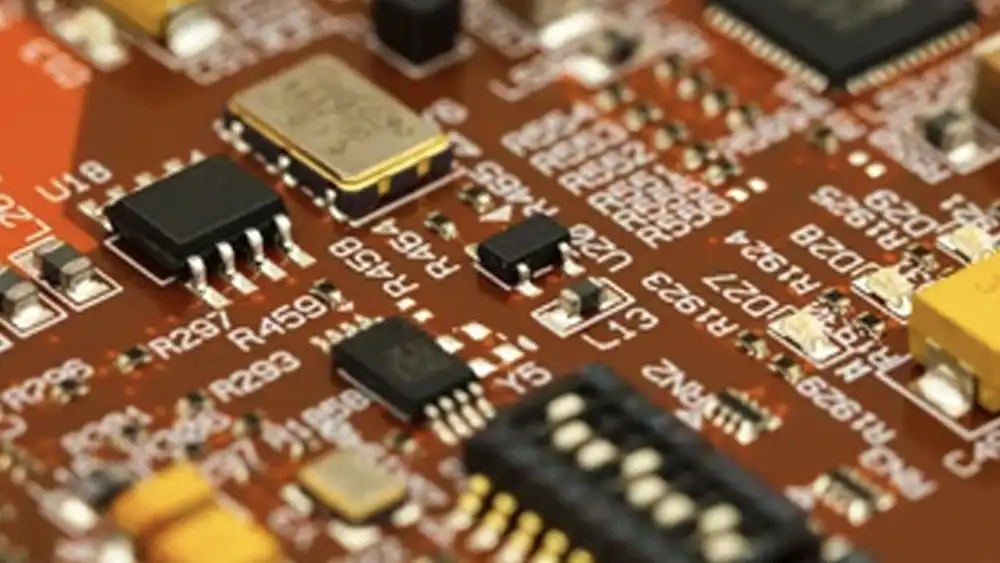
Embedded systems are specialized computing systems that perform dedicated functions within larger mechanical or electrical systems. They are ubiquitous in modern technology, found in devices ranging from consumer electronics and automotive controls to industrial machinery and medical devices.
One of the key components that enhance the performance and efficiency of embedded systems is the Application-Specific Integrated Circuit (ASIC).
Role of ASICs in Embedded Systems
Customization and Optimization ASICs are designed to meet the specific needs of an embedded system, allowing for a high degree of customization. This means that the functionality, performance, and power consumption of the ASIC can be precisely tailored to the requirements of the application, leading to optimized system performance.
Enhanced Performance By designing an ASIC for a specific task, engineers can eliminate unnecessary functionality that would be present in a general-purpose chip. This results in faster processing speeds and more efficient operation, which is crucial for applications that require real-time processing and quick response times.
Power Efficiency Power consumption is a critical consideration in embedded systems, especially those that rely on battery power. ASICs can be optimized to use minimal power for the required task, extending the battery life of portable devices and reducing the overall energy consumption of the system.
Size and Integration ASICs allow for the integration of multiple functions into a single chip, reducing the need for multiple discrete components. This leads to smaller, more compact designs, which is essential in applications where space is limited.
Technical Specifications of Application-Specific Integrated Circuit
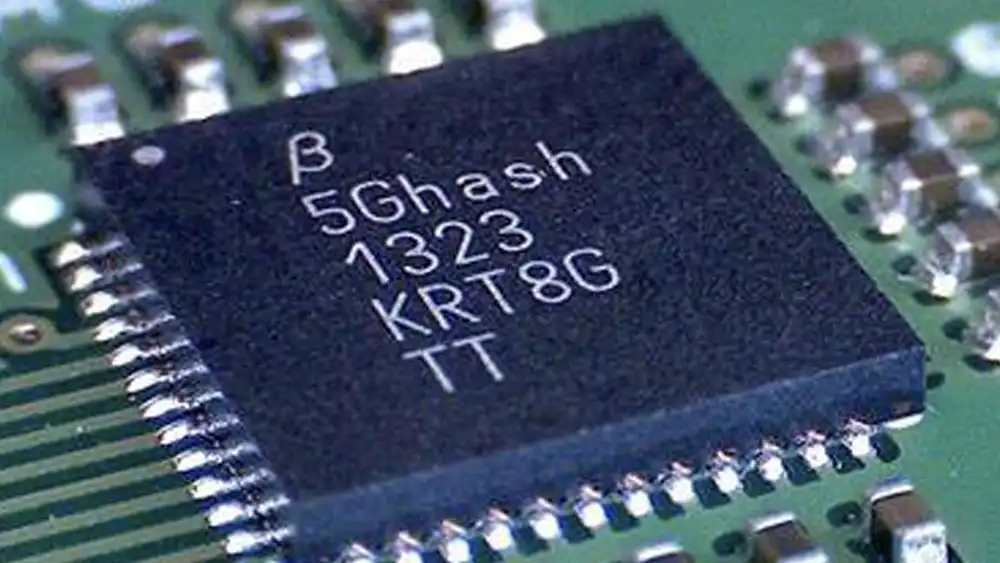
Understanding the technical specifications of ASICs is crucial for grasping their capabilities and applications. Key aspects include the manufacturing process, design flow, and performance metrics.
Manufacturing Process
The manufacturing process for ASICs involves several stages, including design, fabrication, testing, and packaging. Modern ASICs are fabricated using advanced semiconductor processes, with feature sizes as small as 5 nanometers. These processes enable high levels of integration, allowing millions or even billions of transistors to be packed into a single chip. The choice of process technology impacts the performance, power consumption, and cost of the ASIC.
Design Flow
The design flow of an ASIC encompasses multiple steps, from initial specification to final verification. Key stages include:
- Specification: Defining the requirements and functionality of the ASIC.
- Design Entry: Creating the design using hardware description languages (HDLs) like VHDL or Verilog.
- Synthesis: Translating the HDL code into a gate-level representation.
- Place and Route: Physically arranging the components on the chip and routing the connections.
- Verification: Ensuring the design meets the specified requirements through simulation and testing.
- Fabrication: Manufacturing the chip using semiconductor processes.
- Testing: Evaluating the fabricated chips to identify any defects or performance issues.
Performance Metrics
The performance of an ASIC is evaluated based on several metrics, including:
- Speed: The maximum clock frequency at which the ASIC can operate.
- Power Consumption: The amount of power the ASIC consumes during operation, critical for battery-powered and energy-efficient applications.
- Area: The physical size of the ASIC, impacting the cost and feasibility of integration into devices.
- Reliability: The ability of the ASIC to perform correctly over its intended lifespan, under various operating conditions.
Applications of ASICs

ASICs are employed in a wide range of industries, each benefiting from the unique advantages offered by customized integrated circuits.
Consumer Electronics
In consumer electronics, ASICs are used to enhance the performance and functionality of devices such as smartphones, tablets, and smart TVs. They enable advanced features like high-resolution displays, fast processing speeds, and efficient power management.
Telecommunications
Telecommunications equipment relies heavily on ASICs for tasks such as signal processing, data encryption, and network management. ASICs help to achieve the high-speed data transmission and low latency required in modern communication networks, including 5G technology.
Automotive Industry
The automotive industry uses ASICs in various applications, including engine control units (ECUs), advanced driver-assistance systems (ADAS), and infotainment systems. ASICs enable real-time processing and decision-making, enhancing vehicle performance, safety, and user experience.
Healthcare Sector
In healthcare, ASICs are integral to medical devices such as pacemakers, imaging equipment, and diagnostic tools. They provide the precision and reliability needed for critical applications, improving patient outcomes and enabling new medical technologies.
Industrial Applications
Industrial automation and control systems benefit from the robustness and efficiency of ASICs. They are used in applications such as robotics, process control, and industrial IoT, where reliability and performance are essential.
Cryptocurrency Mining
Cryptocurrency mining has seen a surge in the use of ASICs, specifically designed to perform the complex calculations required for mining cryptocurrencies like Bitcoin. These ASICs offer significantly higher performance and energy efficiency compared to general-purpose hardware.
Benefits of Using ASICs
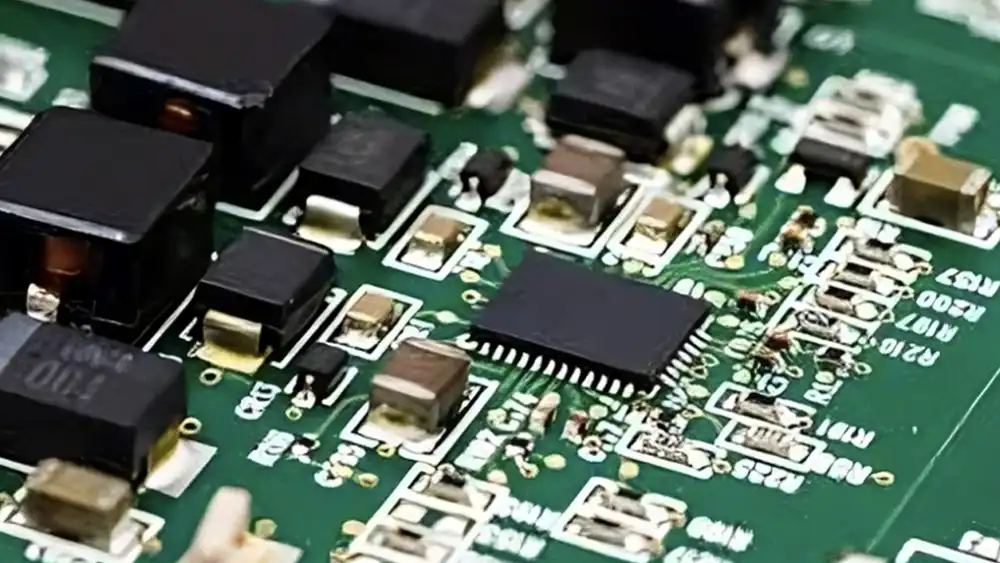
The use of ASICs offers several benefits, making them a preferred choice for many applications.
Performance Optimization
ASICs are designed to perform specific tasks with high efficiency, resulting in optimized performance. This specialization allows for faster processing speeds and improved overall system performance compared to general-purpose circuits.
Power Efficiency
ASICs are engineered to minimize power consumption, which is crucial for battery-powered devices and energy-efficient applications. By focusing on specific tasks, ASICs can reduce unnecessary power usage, extending battery life and reducing energy costs.
Cost-Effectiveness
While the initial development cost of an ASIC can be high, the per-unit cost decreases significantly with high-volume production. This makes ASICs cost-effective for applications where large quantities are required, providing long-term financial benefits.
Miniaturization
The ability to integrate multiple functions into a single chip allows for the miniaturization of electronic devices. This is particularly important in applications where space is limited, such as mobile devices and wearable technology.
Comparative Analysis
To understand the unique advantages and limitations of ASICs, it’s helpful to compare them with other similar technologies.
ASICs vs. FPGAs
- Customization: ASICs offer a higher level of customization, allowing for optimized performance for specific applications. FPGAs, while flexible and reprogrammable, cannot match the same level of optimization.
- Flexibility: FPGAs can be reprogrammed to perform different tasks, making them ideal for prototyping and applications requiring frequent updates. ASICs, once fabricated, have fixed functionality.
- Cost: The initial development cost for ASICs is higher due to custom design and fabrication processes. FPGAs have lower upfront costs but may be more expensive in high-volume production.
ASICs vs. GPUs
- Performance: ASICs can outperform GPUs for specific tasks by providing tailored solutions. GPUs, designed for parallel processing, excel in a wide range of applications, including graphics rendering and AI.
- Power Efficiency: ASICs are typically more power-efficient for their intended tasks, while GPUs consume more power due to their general-purpose design.
- Application Scope: GPUs are versatile and can handle a variety of tasks, making them suitable for general computing. ASICs are specialized and excel in applications that require high efficiency and performance.
ASICs vs. Standard Cell Designs
- Design Time: Standard cell designs use pre-defined logic cells, reducing design time compared to full-custom ASICs. However, they may not achieve the same level of performance optimization.
- Customization: ASICs offer more customization options than standard cell designs, allowing for better optimization of performance and power consumption.
- Cost: Standard cell designs can be more cost-effective for moderate-volume production, while ASICs are more suitable for high-volume applications due to their per-unit cost advantages.
User Guides and Tutorials
Designing an ASIC is a complex process that requires a thorough understanding of various tools and methodologies. Here is a step-by-step guide to get started with ASIC design:
Basics of Designing an ASIC
- Define Requirements: Clearly outline the specifications and functionalities needed for the ASIC.
- Choose Design Tools: Select appropriate hardware description languages (HDLs) like VHDL or Verilog, and simulation tools.
- Create Design: Write HDL code to describe the functionality of the ASIC.
- Synthesize Design: Use synthesis tools to convert HDL code into a gate-level representation.
- Place and Route: Arrange the physical layout of the components on the chip and route the interconnections.
- Verify Design: Perform thorough testing and verification to ensure the design meets specifications.
- Fabricate: Send the final design to a semiconductor foundry for fabrication.
- Test and Debug: Test the fabricated chips for functionality and performance, and debug any issues.
Tools and Software for ASIC Design
Several tools and software are available to assist in the design and verification of ASICs. Some popular options include:
- Synopsys Design Compiler: Used for synthesis of HDL code.
- Cadence Innovus: For place and route operations.
- Mentor Graphics ModelSim: For simulation and verification.
- Xilinx Vivado: Although primarily for FPGAs, it can also be used for ASIC prototyping.
Step-by-Step ASIC Development Process
- Specification Phase: Define the requirements, functionality, and performance goals.
- Design Phase: Develop the HDL code and perform initial simulations.
- Synthesis Phase: Convert the HDL code into a gate-level netlist.
- Physical Design Phase: Conduct place and route, and perform timing analysis.
- Verification Phase: Run detailed simulations and tests to ensure correctness.
- Fabrication Phase: Send the design to a foundry for manufacturing.
- Post-Fabrication Testing: Conduct thorough testing of the fabricated ASICs to identify and rectify any issues.
Conclusion
Application-Specific Integrated Circuits (ASICs) play a critical role in the modern technological landscape, offering customized solutions for a wide range of applications. From enhancing consumer electronics to powering telecommunications infrastructure and advancing healthcare technologies, ASICs provide unparalleled performance and efficiency.
Transform Your Business with Custom ASIC Solutions
Unlock the full potential of your products with our specialized Application-Specific Integrated Circuits (ASICs). Designed for optimal performance and efficiency, our ASICs are tailored to meet the unique needs of your industry, whether it’s consumer electronics, telecommunications, automotive, healthcare, or industrial applications.
Why Choose Our ASIC Solutions?
- Performance Optimization: Achieve unparalleled speed and efficiency for your specific applications.
- Power Efficiency: Reduce power consumption and extend the lifespan of your products.
- Cost-Effectiveness: Benefit from long-term savings with high-volume production.
- Customization: Get solutions that are precisely tailored to your business needs.
Partner with us to stay ahead in your industry with cutting-edge ASIC technology. Our expert team will guide you through every step of the design and production process, ensuring that you receive the highest quality, most reliable integrated circuits available.
Ready to take the next step?
Contact us today to discuss how our custom ASIC solutions can revolutionize your products and elevate your business.
Get in Touch Now!